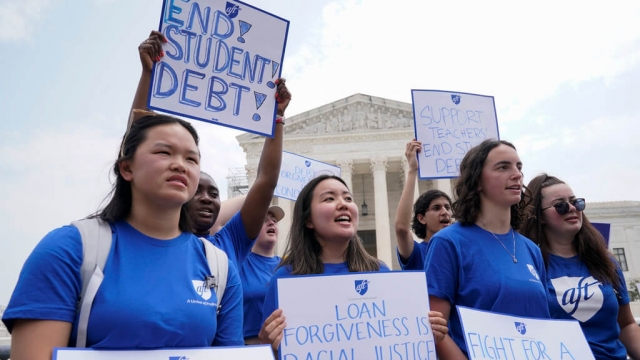Change is in the air for higher education with the Supreme Court’s ruling 6-3 against President Joe Biden’s student loan forgiveness program, but questions remain.
It also comes following the decision that race is no longer able to be considered when it comes to college admissions.
"I’ve always believed that the promise of America is big enough for everyone to succeed and that every generation of Americans, we have benefitted by opening the doors of opportunity just a little bit wider to include those who have been left behind," said President Biden.
The higher education shake-up is sure to have ripple effects in the months and semesters to come.
The pause on student loans has been in place since March 2020, evoking the Heroes Act of 2003.
The act allows the Department of Education to "waive or modify" provisions of student loan forgiveness in the event of a national emergency.
The end of the public health emergency was declared in May, so opponents argued the circumstances no longer allowed the executive branch to pause the repayments.
What happens next, however, is not entirely clear.
"But today’s decision has closed one path. Now we’re going to pursue another, and I’m never going to stop fighting for you. We’ll use every tool at our disposal to get you the student debt relief you need and reach your dreams," said President Biden.
This is unlikely to be the end of the fight over student debt.
Student loan payments can be a massive burden on households, and loans might never get fully paid off, especially with steep interest rates that keep monthly costs rising.
SEE MORE: Latest Supreme Court decisions specifically affecting Black Americans
But even the lawmakers who support the federal government stepping in can’t agree on how.
Among Democrats, prominent voices ranging from Sen. Elizabeth Warren to Senate Majority Leader Chuck Schumer often point to the once-obscure provision of the Higher Education Act, dating back to the 1960s.
It gives the Secretary of Education the authority to "enforce, pay, compromise, waive, or release" a federal loan.
It’s been invoked before in high-profile cases of fraud like Sweet v. Cardona in order to forgive students debts from for-profit colleges.
In late May, House Republicans across two committees announced they’d investigate the case, suspecting the ruling was "influenced by political considerations."
It’s a potential preview of what could come should the Biden administration try to use the Higher Education Act as a Plan B for student loan forgiveness.
Congress can block the regulation using the Congressional Review Act, which requires a simple majority in both houses. The president can veto this in order to press ahead with the new regulation.
Congress can override that veto with a two-thirds majority in both houses.
The Biden administration does have other options.
In January, the administration proposed new plans to reduce loan payments for lower and middle-income borrowers, like an income-driven forgiveness and repayment plan.
But these could face similar judicial challenges.
Whether the Department of Education tries to forgive debt through the Higher Education Act or tries another form of debt repayment plan, one thing is clear:
The Biden administration has options left that are all going to be slow processes—processes that could leave student borrowers waiting even longer to see what will become of their debts.
With these major changes to admissions and student loan processes, students and applicants across the country will have much to prepare for in the upcoming school year and beyond.
Trending stories at Scrippsnews.com




